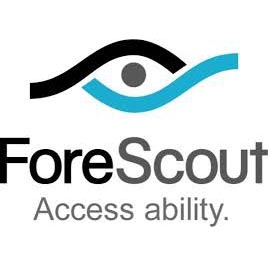Almost all modern enterprises are stuck with similar information security pain points. IT infrastructure is now more complex than ever due to the increased diversity of endpoint operating systems, increasing network connectivity and cloud adoption and increases in mobility. The percentage of organizations formally endorsing BYOD initiatives is expected to skyrocket from 31 percent in 2014 to 77 percent in 2016.
The “2014 Cyberthreat Defense Report” by CyberEdge Group was underwritten by nine firms across the network security world, including ForeScout, and revealed that network access control (NAC) was rated the most effective security technology in defending against cyberthreats.
The study picked the brains of 763 IT security professionals about their practices, their security preparedness and how effective their current security technologies are. The participants rated the effectiveness of various cybersecurity solutions on a scale of one to five, and NAC received the highest ranking of 3.71.
The research dug up that 77 percent are already using or plan to use network access control as part of a mobile security strategy. Also, NAC was named the most often used technology (53 percent) to detect host security misconfigurations as well as mobile device vulnerabilities (51 percent).
The findings also shed light on the need for continuous monitoring and mitigation in an enterprise setting with more than 60 percent of participants experiencing a breach at some point in 2013. A quarter of respondents also felt their employers weren’t investing enough in adequate defenses, contributing to the alarming number of hacks.
So what does this mean for the future of network and information security?
To address common security challenges, many organizations are now supplementing their existing security products with pervasive network security technologies, like NAC, to dynamically view and control user, device, application and access diversity.
Organizations are also moving towards more integrated security systems. The CyberEdge researchers found that most respondent organizations are meshing multiple technologies together to create a more unified security system that better meets their specific needs.
These conclusions bode well for network security solutions like ForeScout CounterACT, which provides both network access control and linkages to your other security systems. CounterACT finds and fixes security gaps, identifies and blocks rogue devices, and automates common security controls. In addition, CounterACT enables network and security products to share information with each other, allowing enterprises to respond faster and with more intelligence to a wide range of cyberthreats and risks.
We’ve highlighted some of the report’s most illuminating statistics in a handy infographic here: http://www.forescout.com/cyberthreat-defense-infographic/. You can download the “2014 Cyberthreat Defense Report” in its entirety to learn more: .
Jack Marsal, Director, Solution Marketing at ForeScout
F oreScout delivers pervasive network security by allowing organizations to continuously monitor and mitigate security exposures and cyber attacks. The company’s CounterACT appliance dynamically identifies and assesses all network users, endpoints and applications to provide complete visibility, intelligence and policy-based mitigation of security issues. ForeScout’s open ControlFabric technology allows a broad range of IT security products and management systems to share information and automate remediation actions.
oreScout delivers pervasive network security by allowing organizations to continuously monitor and mitigate security exposures and cyber attacks. The company’s CounterACT appliance dynamically identifies and assesses all network users, endpoints and applications to provide complete visibility, intelligence and policy-based mitigation of security issues. ForeScout’s open ControlFabric technology allows a broad range of IT security products and management systems to share information and automate remediation actions.
The opinions expressed in this post belongs to the individual contributors and do not necessarily reflect the views of Information Security Buzz.



